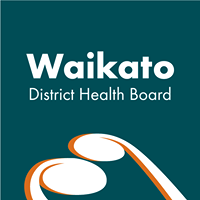HEALTHIER FUTURE AHEAD FOR 4000 WAIKATO PEOPLE
More than 4000 Waikato people with high health needs, the majority of them children, now face a healthier future thanks to a project run by Te Puna Oranga, Waikato District Health Board’s Maori Health Service.
The Warm Our Whare (WOW) free floor and ceiling
insulation project has reached over 1000 homes in Hamilton
and South Waikato.
The initiative seeks to reduce down
respiratory disease and rheumatic fever amongst at risk
children and is part of the wider DHB’s wider strategy to
reduce down avoidable hospital admissions. The scheme has
now been extended to include the Hauraki area.
Waikato DHB’s Māori Health Plan 2013-2014, documents this and other projects Te Puna Oranga worked on against a range of national Māori health indicators. The Waikato DHB’s Māori Health Plan Ki te Taumata o Pae Ora literally means “towards the summit or pinnacle of Pae Ora, a healthy future”.
Waikato DHB’s Safe Sleep programme has seen
over 1000 Pepi-Pod distributed to at risk pepi/ infants and
their whānau across district bringing safe sleep messages
and practices to close to 5000 high needs whānau
members.
Te Puna Oranga general manager Ditre Tamatea
said the service had 25 partnerships with groups that
included community, Māori providers and DHB service areas
to ensure people received education on safe sleep messages
and practices.
The service also led the development of a safe sleep model and training across the Midland region which subsequently saw a reduction in sudden unexpected death of an infant rates to levels comparable to Southland a region which has nowhere near the number of at risk pepi (babies) as the Midland region.
Infant mortality statistics (all causes) for 2013, show that Midland was the only region to see a continuing fall in infant deaths during 2013 (from 61 to 51 deaths).
Te Puna Oranga worked to reduce tobacco usage as the number one contributor to death and illness in Māori through the establishment of Tupeka covenants to make targeted services (kura, Māori providers, DHB services etc.) entirely tobacco free through the use of Tikanga Māori.
“This work has been supported by on ongoing work to ensure that the target of over 95 per cent of Māori inpatients who smoke are offered smoking to quit support services,” said Mr Tamatea.
This target has been attained over the last four quarters (96 per cent for quarter 4).
Waikato DHB will continue to build forward on its performance against national Māori health priority indicator’s and will continue to support preventative and early intervention approaches which support better health outcomes for Māori .
Ki te Taumata o Pae Ora 2014-2015, published on the DHB’s website, lists a summary of indicators Te Puna Oranga will work on in partnership with the community.
“The state of Pae Ora will be attained via improvements in personal health (Mauri Ora), improvements in whanau health and well being (Whanau Ora) and by addressing environmental health issues (Wai Ora),” said Mr Tamatea.
Further information www.waikatodhb.health.nz/tepunaoranga
ENDS



 National Youth Theatre: 140 Christchurch Kids Shine In National Youth Theatre’s Historic CATS Premiere
National Youth Theatre: 140 Christchurch Kids Shine In National Youth Theatre’s Historic CATS Premiere NZ Symphony Orchestra: NZSO To Tour Masterworks By Mozart, Beethoven, Haydn And More
NZ Symphony Orchestra: NZSO To Tour Masterworks By Mozart, Beethoven, Haydn And More Journal Of Public Health: Vape Shops Cluster Around Schools
Journal Of Public Health: Vape Shops Cluster Around Schools Timaru District Council: Aigantighe Art Gallery Hosts An Iconic Robin White Touring Exhibition
Timaru District Council: Aigantighe Art Gallery Hosts An Iconic Robin White Touring Exhibition Victoria University of Wellington: Dame Winnie Laban Awarded Honorary Doctorate Recognising Achievements For Pasifika
Victoria University of Wellington: Dame Winnie Laban Awarded Honorary Doctorate Recognising Achievements For Pasifika  HESSA: This Isn’t Fair—And It’s Time To Fix It - HESSA Petition Calls For Inclusive Student Sports
HESSA: This Isn’t Fair—And It’s Time To Fix It - HESSA Petition Calls For Inclusive Student Sports